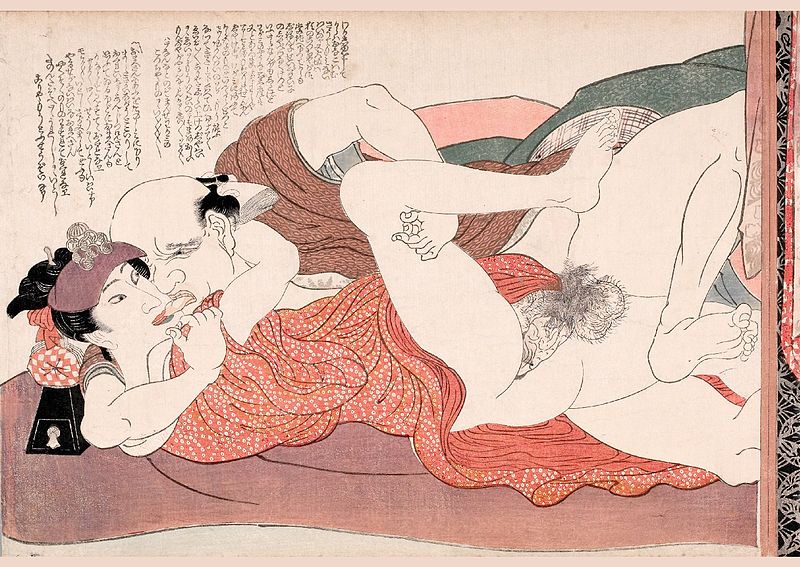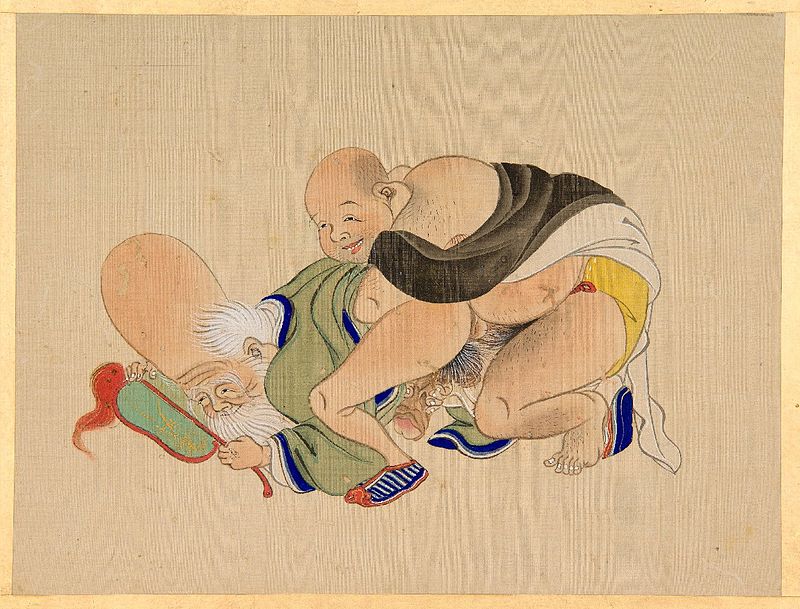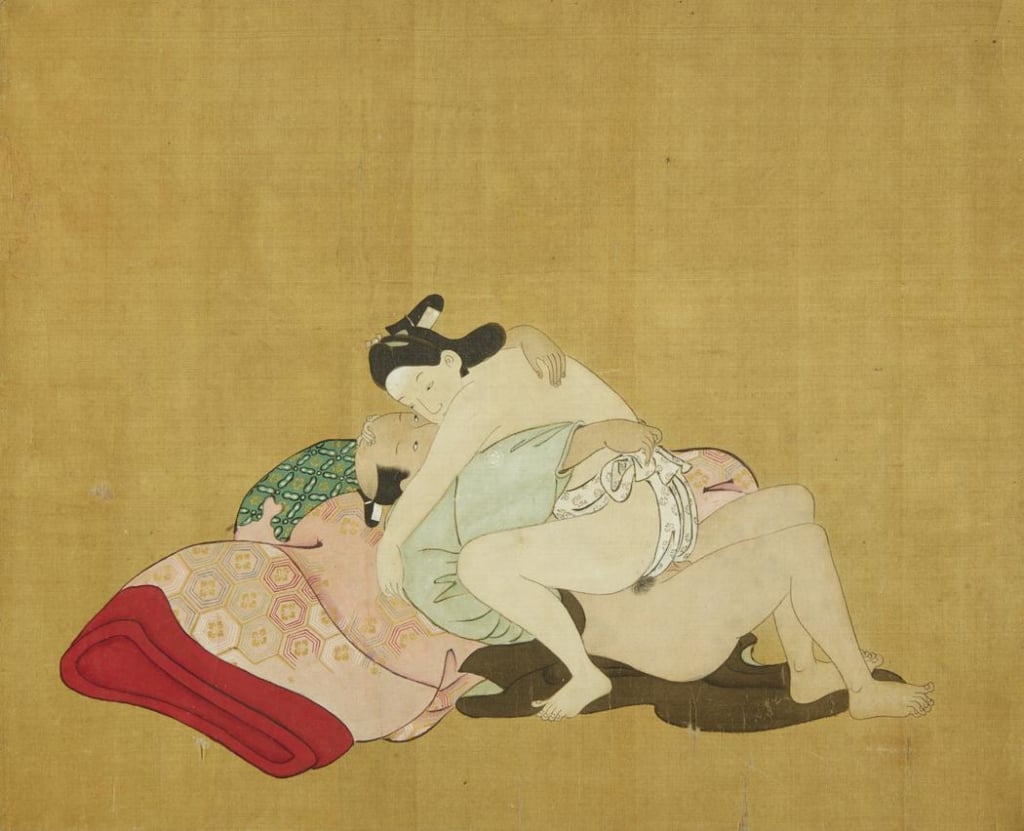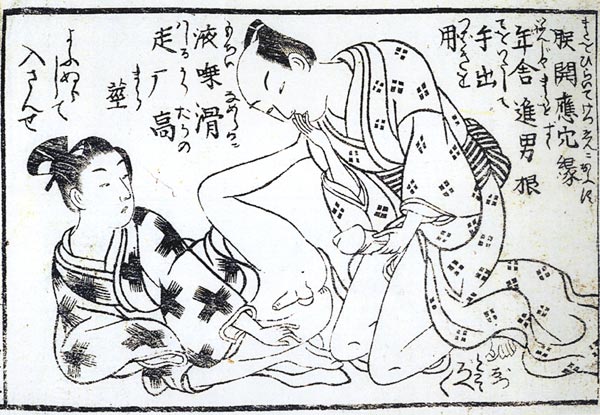Rituals of Ancient Gay Shunga Erotica
Shunga was prolific in Japan during the Edo period, with ‘nanshoku’ referring to the depiction of homosexual erotica.

Nishikawa Sukenobu
One notable vein of shunga is nanshoku, translating as ‘male colours’ and referring to gay erotic depictions. Images derived from ancient myth, the military, religion, theatre, class, and prostitution feature samurai or Buddhist monks engaging in gay sex with men often dressed as geisha.
Shunga, or Japanese erotic art, was prolific in Japan during the Edo period, from 1603 to 1868. Printed with woodblock and produced in a broad spectrum of colours and details, the scrolls were intimate, erotic, and sometimes humorous. The aesthetic is said to be influenced by the illustrations of Chinese medicine manuals as well as the work of Zhou Fang, a Chinese painter from the Tang dynasty era who painted oversized genitals, which later became characteristic of many shunga artists.
Roles and Rituals
The scenes contain a complex morality when considered by contemporary standards. The images often depict a sexuality derived from practices within monasteries when an older partner such as a priest or a monk would have sex with a younger, often pre-pubescent partner. These religious practices were replicated in samurai circles, and young samurai would be sent to Buddhist monasteries during training. Many would enter into same sex relationships with older monks.
This age-structured sexuality came to be known as shudo, meaning ‘way of the young’. The prevalence of male homosexuality has often been attributed to the gender imbalance of the population during the Edo period, which was about 70% male, and the scenes in which partners are dressed in women’s attire refers to onnagata from Kabuki theatre, where men would play women’s roles.
Shunga, which euphemistically translates as ‘pictures of spring,’ is an important aesthetic reference in Japanese culture, with even artists such as Hokusai producing work in this vein.

Yanagawa Shigenobu I Nanshoku

Unidentified Artist

Miyagawa Chosun Nanshoku 1

Suzuki Harunobi, F.M. Bertholet Collection
TRENDING
-
A House from the Taisho Era Reveals Its Secrets
While visiting an abandoned building, Hamish Campbell discovered photographs the owner had taken of the place in the 1920s.

-
The Taboo-Breaking Erotica of Toshio Saeki
The master of the 1970s Japanese avant-garde reimagined his most iconic artworks for a limited box set with silkscreen artist Fumie Taniyama.

-
With Meisa Fujishiro, Tokyo's Nudes Stand Tall
In the series 'Sketches of Tokyo', the photographer revisits the genre by bringing it face to face with the capital's architecture.

-
Masahisa Fukase's Family Portraits
In his series ‘Family’, the photographer compiles surprising photos in which he questions death, the inescapable.

-
Hajime Sorayama's Futuristic Eroticism
The illustrator is the pioneer for a form of hyperrealism that combines sensuality and technology and depicts sexualised robots.





